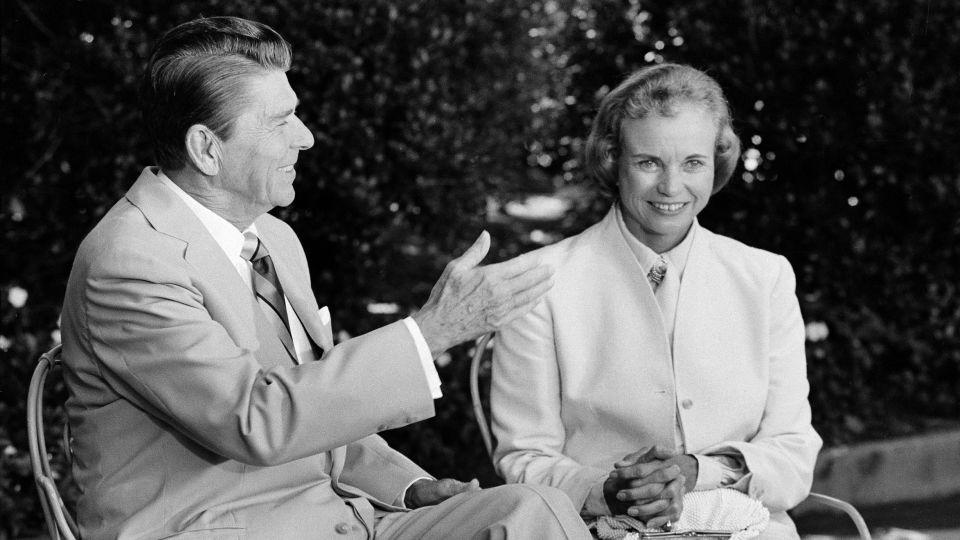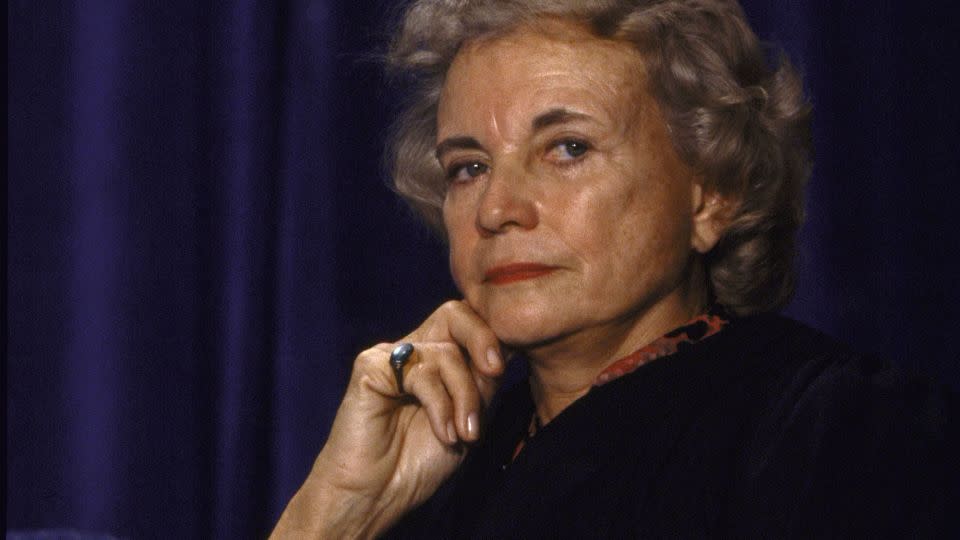Former Justice Sandra Day O’Connor, first woman on the Supreme Court, dies
Former Justice Sandra Day O’Connor, who blazed trails as the first woman to sit on the Supreme Court, has died, the court announced Friday morning.
O’Connor, 93, died due to “complications related to advanced dementia,” the court said.
O’Connor inspired generations of female lawyers – including the five women who served after her nomination on the high court. They admired her path marking success in a field that had been dominated by men. Over time, she became known as a moderate conservative and often the swing vote on hot-button social issues.
She died after living to see a new conservative-leaning court overturn an abortion decision she helped pen in 1992, lower the bar between church and state and set its sights on another area of interest to her: affirmative action.
Chief Justice John Roberts described O’Connor as a “patriot” and a “fiercely independent defender of the rule of law, and an eloquent advocate for civics education.”
President Joe Biden, meanwhile, hailed her as “an American icon.”
“I did not agree with all of her opinions, but I admired her decency and unwavering devotion to the facts, to our country, to active citizenship and the common good,” Biden said in a statement Saturday.
In 2018, O’Connor revealed in a letter that she had been diagnosed with the beginning stages of dementia, probably Alzheimer’s disease.
“While the final chapter of my life with dementia may be trying, nothing has diminished my gratitude and deep appreciation for the countless blessings of my life,” she wrote.
In nominating O’Connor for the bench in 1981, President Ronald Reagan called her “truly a person for all seasons, possessing those unique qualities of temperament, fairness, intellectual capacity, and devotion to the public good which have characterized the 101 brethren who have preceded her.”

Growing up on the Lazy B Ranch in Arizona, O’Connor was known for her self-reliance and independence, traits she acquired as a young woman branding cattle, driving tractors, and firing rifles.
“She has shown time and time again that she is a true cowgirl,” the late Justice Ruth Bader Ginsburg said of O’Connor in a tribute in 2015.
O’Connor stepped down from the court in 2006 to care for her husband who was ailing from Alzheimer’s disease. President George W. Bush would go on to nominate Justice Samuel Alito to take her seat.
A graduate of Stanford University, she went on to study at Stanford Law School where she met and dated –for a time—her classmate the late Chief Justice William Rehnquist. She would go on to marry another classmate, John O’Connor.

Upon graduating, she was turned down by law firms because of her sex. Eventually, she started her own firm with her husband. Later, she served as an Arizona state senator as the first female majority leader. She was a judge of the Maricopa County Superior Court and, in 1979, the Arizona Court of Appeals.
“We all bring with us to the court or to any task we undertake our own lifetime of experiences and background,” O’Connor said in a 2003 CNN interview. “My perceptions might be different than some of my colleagues’ but at the end of the day we all ought to be able to agree on some sensible solution to the problem,” she said.
Former O’Connor clerk James Forman argued that her gender was not a factor in her jurisprudence.
“I don’t think there’s any decision you can say, ‘she reached this result because she’s a woman,’” Forman said.
Key vote on abortion, affirmative action, Bush v. Gore
During her tenure, the court for a time was known informally as the “O’Connor Court” because she served as the deciding vote in so many controversial cases. She was perhaps best noted for her vote in Planned Parenthood v. Casey, a 1992 opinion that reaffirmed a woman’s right to an abortion. Under the new ruling a state could not impose an “undue burden” on a woman seeking an abortion. The opinion would be overturned in 2022 by a conservative court bolstered by three of President Donald Trump’s nominees.

O’Connor also wrote a 5-4 opinion upholding the University of Michigan Law School’s affirmative action program in 2003.
Nearly two decades later, the Supreme Court announced that it would take a fresh look at affirmative action during the 2022 term.
She also penned the judgment of the court in 2004 ruling against the George W. Bush administration’s post-9/11 detainee policy, writing, “a state of war is not a blank check.”
She sided with the conservative side of the bench, however, in favor of Bush during the 2000 Bush v. Gore case that ensured the presidency for the Republican candidate and remained steadfast in supporting states’ rights.
While criticized at times for lacking a dedication to a hard and fast jurisprudential doctrine, she was known as a swing vote and a pragmatist who dealt with issues on a case-by case basis.
Former clerk Marci Hamilton said anyone who spoke of O’Connor being a fence-sitter was off-base.
“Those would be the people who have never met her,” Hamilton said. “Anyone who has met her knows that she makes up her own mind and is not at all concerned where anyone else is on the spectrum.”
Once she retired from the bench, her replacement, Alito, moved the court to the right on issues such as restrictions to abortion and campaign finance. It was Alito who would pen the 2022 decision overturning Roe v. Wade and Casey.
After leaving the high court and before her own diagnosis, O’Connor became an advocate for Alzheimer’s disease. She also launched a website dedicated to encouraging young people to learn civics.
Her husband died in 2009, and she leaves behind three sons.
O’Connor was well aware of the symbolism of her place in history as the first female justice.
“Let me tell you one reason why I think it’s important, and that is for the public generally to see and respect the fact that in positions of power and authority, that women are well-represented,” O’Connor said in a 2003 interview with CNN. “That it is not an all-male governance, as it once was.”
This story has been updated with additional information.
For more CNN news and newsletters create an account at CNN.com
